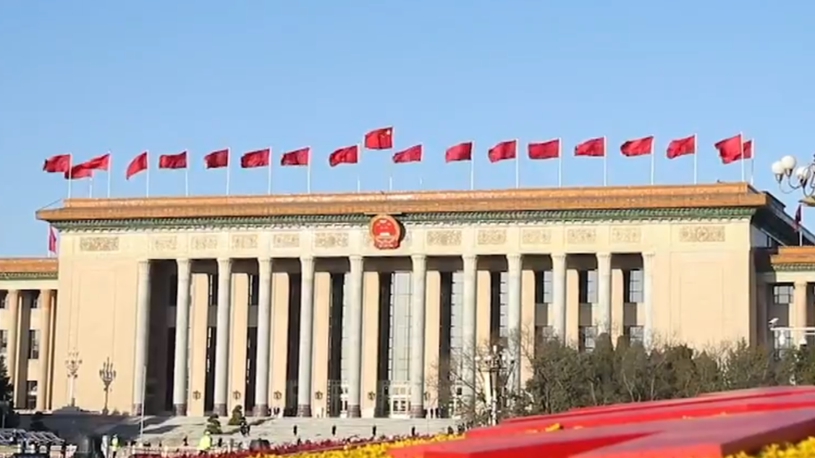* The ruins of ancient China's first government-run institution of higher learning, built in 374 BC, were discovered in late February in Zibo City, east China's Shandong Province.
* Founded by the State of Qi during the Warring States Period (475-221 BC), the Jixia Academy was a state institution of higher learning with multiple roles such as research institute, university and think tank, and had existed for more than 150 years.
* In a similar period, Plato's Academy was founded in Athens. Along with the Jixia Academy, the two institutions of higher learning created a glorious time in the history of world civilization.
By Xinhua writers Li Jianchang, Zhang Xinyi and Zhang Wuyue
JINAN, March 12 (Xinhua) -- Since the ruins of ancient China's first government-run institution of higher learning had been discovered in late February in Zibo City, east China's Shandong Province, curiosity has been roused around the school built in 374 BC.
The building complex was unearthed following a five-year excavation drive, and historical records confirmed it to be the Jixia Academy, a state institution of higher learning with multiple roles such as research institute, university, and think tank, and had existed for more than 150 years.

Photo taken on March 1, 2022 shows a view of the ruins of Jixia Academy, ancient China's first government-run institution of higher learning, discovered in Zibo City, east China's Shandong Province. (Xinhua/Wang Yang)
DISCOVERY OF CHINA'S EARLIEST STATE ACADEMY
Four rows of building foundations have been found at the site, measuring about 210 meters from east to west at its widest and 190 meters long from north to south, with a total area of nearly 40,000 square meters. The site is connected to the ancient capital city of Qi, and it appears as a right-angled trapezoid from above, according to archaeologists.
More than 1,000 artifacts were unearthed during the last five years of excavation, among which architectural components using a special technique would glow with colorful lights when the sun shines on them. The high-level decoration proves the prosperity and glory of Jixia Academy, said Zheng Tongxiu, curator of the provincial museum.
Founded by the State of Qi during the Warring States Period (475-221 BC), Jixia Academy was the center of the academic scene of "the contention of a hundred schools of thought" in the Eastern Zhou Dynasty (770 B.C.-256 B.C.).
Chinese scholars call it the "axis" era of China, or the era of Chinese classicism that outlined the characteristics of Chinese culture.

Photo taken on March 1, 2022 shows some relics unearthed from the ruins of Jixia Academy, ancient China's first government-run institution of higher learning, discovered in Zibo City, east China's Shandong Province. (Xinhua/Wang Yang)
JIXIA ACADEMY AND PLATO'S ACADEMY
In a similar period, Plato's Academy was founded in Athens. Along with the Jixia Academy, both institutions of higher learning created a glorious time in the history of world civilization.
"The two institutions acted as the cradle of thoughts, seeking ideological and philosophical breakthroughs, which made them quite similar," said Wang Zhimin, director of Qi culture institute of Shandong University of Technology.
Wang said the two institutions shared the same academic atmosphere. "Dialogues, discussions and even debates were frequently seen in both schools to achieve the advancement of academics."
As to the follow-up impacts on the world, Wang said the Jixia Academy shaped the mode of traditional Chinese culture, and Plato's Academy set up a model of higher education, helping the western world to establish modern universities afterward.
"The two academies constitute a certain match for the development of eastern and western civilizations in the temporal dimension," said Wei Xinyi, a professor at Shandong College of Arts.

Photo taken on March 1, 2022 shows part of the foundation of the ruins of Jixia Academy, ancient China's first government-run institution of higher learning, discovered in Zibo City, east China's Shandong Province. (Xinhua/Wang Yang)
PEAK OF TRADITIONAL CHINESE CULTURE
Jixia Academy is an unprecedented feat in the history of Chinese education. It has large-scale school buildings, a large number of teachers and students, strict rules and regulations, and regular teaching activities.
Students were free to come to Jixia for study and teachers could also enroll students and give lectures there. Such a free atmosphere greatly promoted the cultivation of talents.
With its open and inclusive academic atmosphere, Jixia attracted countless famous scholars, even gathering thousands of learners sometimes.
"The academy was founded at a time when the traditional Chinese culture was reaching its peak," said Jiang Linchang, professor of Shandong University.
According to Jiang, all the thoughts and knowledge shared in the Jixia Academy featured the characteristics of Chinese culture, as well as the character of Chinese people, which are still of realistic significance nowadays.

Photo taken on March 1, 2022 shows a relic unearthed from the ruins of Jixia Academy, ancient China's first government-run institution of higher learning, discovered in Zibo City, east China's Shandong Province. (Xinhua/Wang Yang)
Establishing the Jixia Academy was one of the major reforms of the State of Qi, which set the stage for a new social trend of great cultural and intellectual expansion at that time, said Zheng Tongxiu, curator of the provincial museum.
The archaeological work of the State of Qi has lasted for 80 years. "The new discovery plays a vital role in the study of traditional Chinese culture and enhancing cultural confidence," Zheng said.
(Xinhua correspondents Sun Xiaohui and Wang Yang also contributed to the story; Video Reporters: Zhao Xiaoyu, Wu Feizuo; Video editors: Zhu Cong, Yin Le)■












